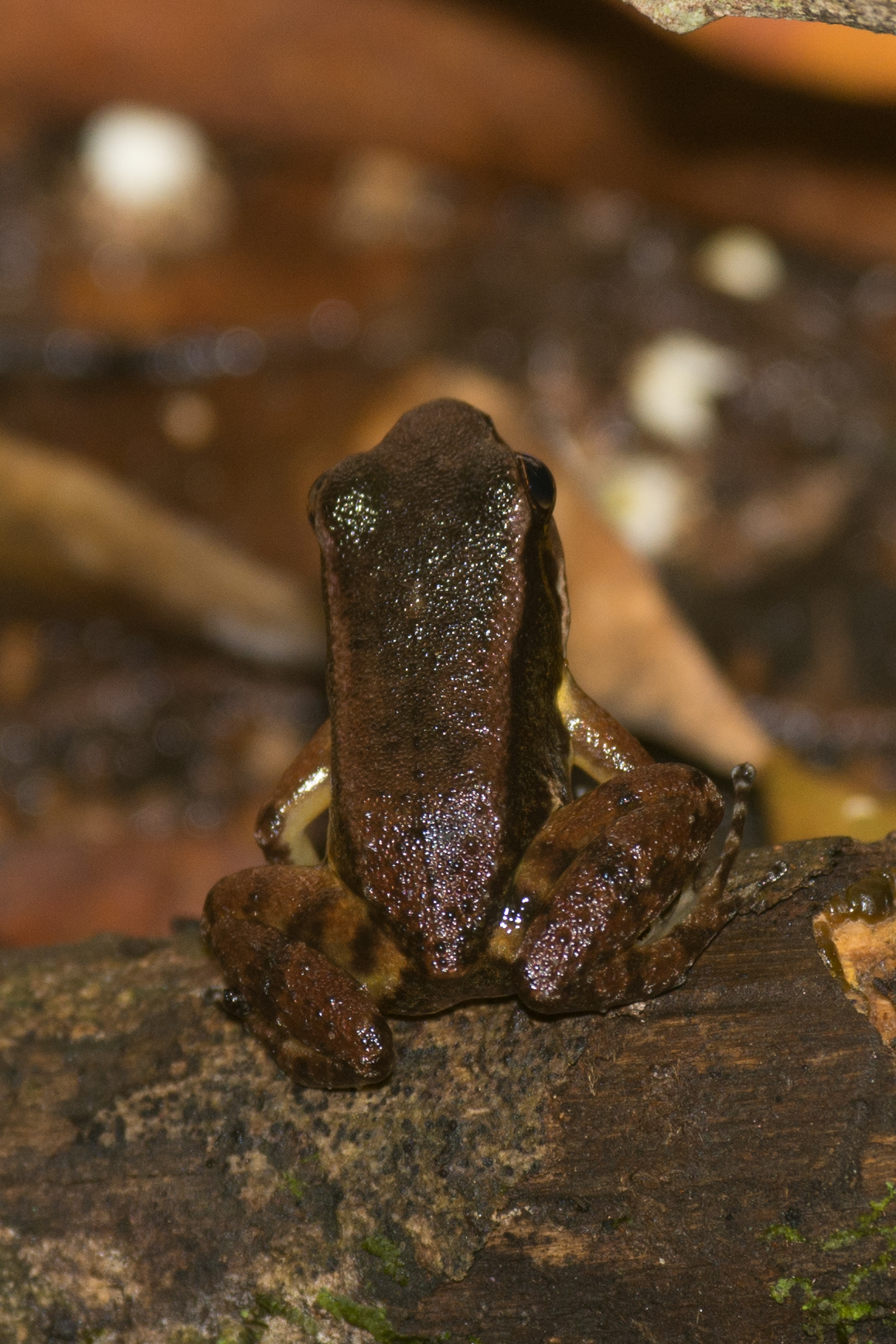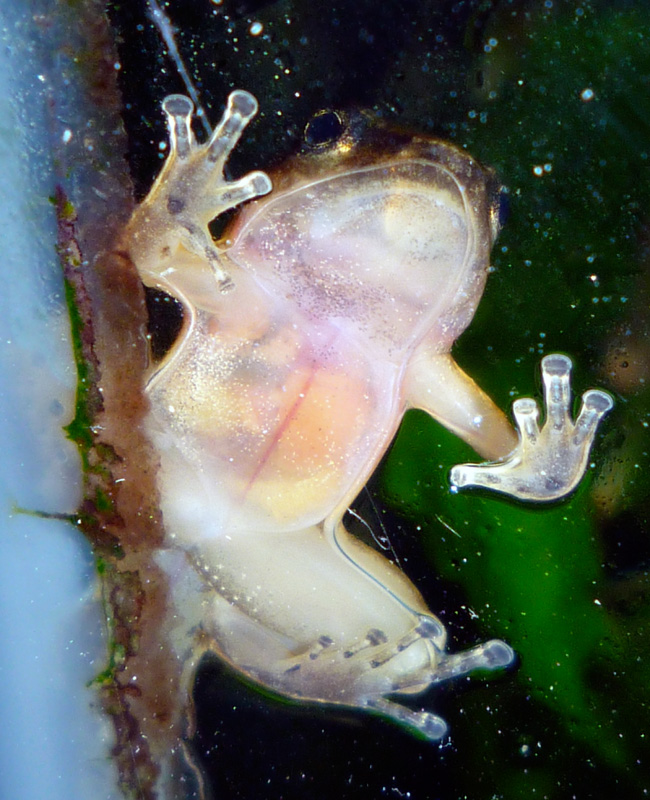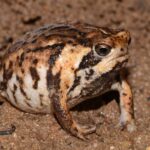- Introduction: A Jewel in Trinidad's Streams
- Taxonomy and Classification: Understanding Its Scientific Roots
- Natural Habitat: Living at Water's Edge
- Physical Characteristics: Small yet Striking
- Behavior and Life Cycle: An Intimate Streamside Dance
- Ecological Role: Guardians of Trinidad’s Biological Harmony
- Threats and Conservation Status: Protecting Trinidad's Native Treasure
- Cultural and Scientific Significance: Beyond the Streambank
- Conclusion: Protecting a Jewel for Future Generations
Introduction: A Jewel in Trinidad’s Streams#
Hidden beneath the emerald canopy of Trinidad and Tobago, amidst the lush foliage and gently trickling streams, resides a little-known yet fascinating amphibian—Mannophryne trinitatis, commonly known as the Trinidad Stream Frog. With its vibrant calls resonating gently through the humid air and alert, jewel-like eyes scanning for danger, this diminutive frog embodies the delicate balance and intricate beauty intrinsic to tropical ecosystems.
Belonging to the Aromobatidae family, Mannophryne trinitatis isn’t just another frog found hopping among the leaves. Indeed, it plays a pivotal role as both predator and prey, an ecological guardian of Trinidad’s freshwater streams. Beyond its ecological significance, this species carries secrets in its skin—unique biochemical compounds earning attention from scientists worldwide.
Taxonomy and Classification: Understanding Its Scientific Roots#
First described scientifically in 1888, the species Mannophryne trinitatis occupies an essential position within its taxonomic framework. Situated within the Aromobatidae family—a group known commonly as stream-dwelling frogs—this small amphibian represents one of the more compelling examples of biodiversity in Trinidad’s freshwater habitats.
Its genus, Mannophryne, encompasses several closely related species, primarily distributed across northern South America and Trinidad. These frogs possess comparable life histories, adapted finely to streamside habitats. However, subtle distinctions in behavior, morphology, and genetic composition clearly demarcate each species, highlighting the evolutionary processes at play across tropical island ecosystems.
Natural Habitat: Living at Water’s Edge#
Mannophryne trinitatis calls the forested hills of northern Trinidad home. Here, dense vegetation blankets steep hillsides that give way to cool, clear streams meandering gently over rocky beds. This species thrives in these shady, moisture-rich environments, particularly flourishing on Trinidad’s Northern Range, a mountainous backbone that defines the island’s silhouette.
The frogs spend much of their lives active during the day, hopping purposefully over moss-covered stones and fallen logs along streambanks. The shaded, humid microclimate is essential, providing refuge from desiccation and a dependable abundance of insects, their primary food source. Precisely adapted to this lush environment, the Trinidad Stream Frog represents a beautiful specialization of evolution to island habitats carved by countless generations of natural selection.
Physical Characteristics: Small yet Striking#
A first glance at Mannophryne trinitatis reveals a delicate beauty. Measuring only about 25-30 millimeters, this tiny frog boasts earthen tones accented by distinctive markings, allowing it to melt effortlessly into its surroundings. Its dorsum is typically a rich, olive-brown hue speckled with darker markings, while its belly showcases lighter, cream-colored tones interlaced with mottling.
Bright yet cryptic eyes peer knowingly from the rounded head, while well-adapted limbs enable swift leaps that defy its small stature. The limbs themselves may exhibit subtle yellowish hues or subtle greens during breeding seasons, adding to their understated allure. Despite its diminutive size, the frog presents remarkable agility and alertness necessary for evading predators and capturing prey.
This effective camouflage and agility also serve crucial survival purposes. Predators like birds, larger frogs, and reptiles patrol these streams, making adaptation to blend seamlessly into their damp, shadowy habitats a prerequisite for survival.
Behavior and Life Cycle: An Intimate Streamside Dance#
An Efficient Hunter of the Stream’s Edge#
Daylight hours find the Trinidad Stream Frog meticulously searching its territory for food. Employing keen eyesight and quick reflexes, these frogs feed eagerly and methodically on small insects, ants, beetles, and flies—an essential process that maintains the delicate ecological balance of their habitat.
A Tender Parental Bond#
The reproductive behavior of Mannophryne trinitatis truly highlights the species’ unique nature. Unlike many amphibians known for their detached reproductive strategy, these tiny frogs exhibit remarkable parental care. During breeding periods, the males claim favorable territories near water courses and emit high-pitched, melodic whistles to attract females, creating a gentle symphony that softly echoes throughout their habitat.
After courtship rituals involving intricate vocalizations and graceful posturing, female frogs deposit their eggs carefully hidden among leaf-litters or damp crevices near streams. Boldly taking up their parental duties, males diligently guard and moisten the egg clutches, ensuring the safety and successful development of their offspring.
Upon hatching, males transport tadpoles on their backs, seeking sheltered pools or slow-moving sections of streams. This remarkable act, known as tadpole brooding and transportation, helps secure further generations while showcasing distinctly admirable parental instincts seldom attributed to such small creatures.
Ecological Role: Guardians of Trinidad’s Biological Harmony#
The ecological contributions of Mannophryne trinitatis extend far and wide, reverberating throughout their habitat. Acting as both predator and prey, these frogs regulate insect populations—many potentially harmful if left unchecked—thus underpinning broader ecological stability.
Simultaneously, they serve as vital prey items for larger vertebrates, providing an indispensable link in nutrient flow and energy transfer across the streamside food web. By thriving in clear, unpolluted waters, their presence, or unfortunate absence, serves as a powerful indicator for the health and overall integrity of their rainforest ecosystems.
Threats and Conservation Status: Protecting Trinidad’s Native Treasure#
Despite their beauty and ecological importance, Mannophryne trinitatis populations face mounting threats. The ongoing human encroachment, deforestation, pollution from agriculture, and climate change represent potent challenges to its continued existence. Habitat loss and degradation resulting from expanding agriculture form particularly dire threats, reducing available territory and destabilizing the very delicate stream ecosystems they depend upon.
As a testament to these persisting pressures, the International Union for Conservation of Nature (IUCN) currently classifies Mannophryne trinitatis as “Least Concern.” However, this status does not negate the urgent necessity for ongoing monitoring, habitat preservation, and targeted conservation measures to ensure populations remain healthy, resilient, and abundant.
Concerted conservation initiatives and local educational campaigns have crucial roles to play. Engaging communities in sustainable development practices, stream preservation, and environmental stewardship can safeguard not just this delicate amphibian but the broader ecological tapestry of Trinidad’s streams and forests.
Cultural and Scientific Significance: Beyond the Streambank#
Although less widely known culturally than some tropical amphibians, Mannophryne trinitatis has captured scientific attention. Researchers increasingly explore its unique skin chemistry, nuances of its reproductive biology, and adaptive physiology. As biological indicators and model organisms, small amphibians like the Trinidad Stream Frog provide essential clues about environmental health, anthropogenic change, and intricate biological processes.
This frog thus encapsulates the essence of wilderness discovery, offering opportunities for deeper scientific revelations connected to ecological health, climate impacts, conservation biology, and more. The Trinidad Stream Frog serves science as an ambassador—informing, educating, and raising awareness through its biology and behavior.
Conclusion: Protecting a Jewel for Future Generations#
The humble yet captivating Mannophryne trinitatis reminds us of nature’s vulnerability, resilience, and ever-surprising beauty. Their continued survival remains intricately linked to the respectful stewardship of Trinidad’s forests, streams, and soils.
As conservationists, students, nature enthusiasts, or simply admirers of the natural world, we all can lend voices and actions toward preserving these fascinating amphibians and the habitats they call home. The fragrant forests, clear waters, and the chorus of frogsong are ours to cherish and protect—a living legacy of biodiversity for generations yet unborn.
Together, let’s act today, ensuring that Trinidad’s hidden gem, the remarkable stream frog Mannophryne trinitatis, continues to captivate, delight, and inspire long into the future.


















